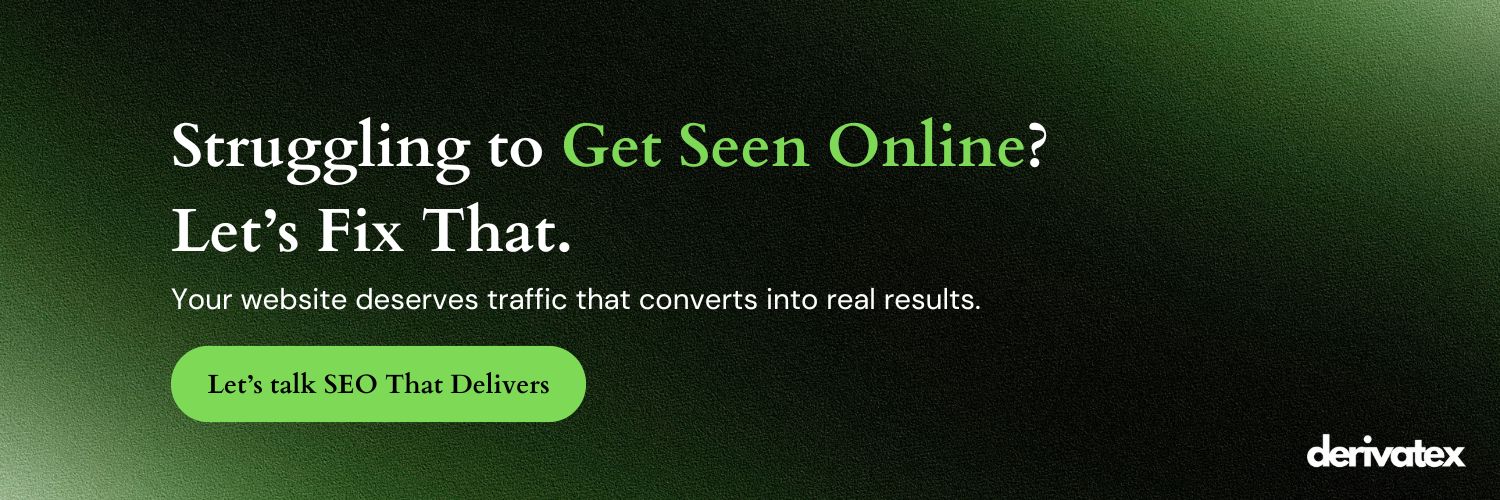Did you know that 70% of marketers find SEO more effective for long-term growth, but paid ads can deliver results up to 3x faster?
For SaaS companies, where scaling fast and sustainably is non-negotiable, choosing the right marketing strategy can feel like a never-ending debate.
On one side, SEO promises compounding benefits and steady organic growth, but it requires patience and consistent effort. On the other side, paid ads offer instant visibility and quick wins but come with high costs and diminishing returns if not optimized effectively.
So, how do you decide which strategy is better for your SaaS business?
The answer lies in data.
In this blog, we’ll dive into 10 crucial stats comparing SEO and paid ads to help you make informed decisions, align your marketing strategy with your goals, and maximize your ROI.
Let’s explore the numbers that every SaaS company needs to know!
Table of Contents
10 Key Stats Every SaaS Company Needs to Know
1. SEO Generates 53% of Website Traffic
Organic search drives over half of all website traffic globally, making it the top source for most businesses, including SaaS. For companies targeting sustainable growth, this highlights the importance of investing in SEO to capture a steady stream of qualified visitors.
SaaS Example: HubSpot’s robust SEO strategy helps them rank for high-intent keywords like “CRM software,” consistently driving traffic and leads without ongoing ad spend.
2. Paid Ads Deliver a 200% ROI on Average
While SEO offers long-term returns, paid ads can deliver an impressive average ROI of 200% when properly optimized. This makes paid ads an attractive option for SaaS companies looking to acquire customers quickly, especially for new product launches or time-sensitive offers.
Insight: Tools like Google Ads’ Smart Bidding and A/B testing for ad creatives can further enhance ROI by ensuring every dollar is well spent.
Don’t Miss: SEO vs. Paid Ads: What’s Better for MarTech SaaS Companies?
3. 70% of Marketers Say SEO Offers Higher Long-Term ROI
A survey of marketers reveals that SEO consistently outperforms paid ads in terms of long-term ROI. This is particularly valuable for SaaS companies building a recurring revenue model, where acquiring customers at the lowest cost per acquisition (CPA) is crucial.
Key Takeaway: SEO is a long game, but its compounding returns can reduce CAC (Customer Acquisition Cost) over time.
4. Paid Ads See 3x Faster Results Than SEO
One undeniable advantage of paid ads is speed. While SEO can take 4–6 months to show significant results, paid ads deliver traffic and leads almost immediately, making them ideal for SaaS startups or companies entering new markets.
Pro Tip: Use paid ads to complement your SEO efforts in the short term while building organic visibility for the long term.
5. 46% of Clicks Go to the Top 3 Organic Results
Ranking in the top three organic positions is critical, as these spots capture nearly half of all clicks. This underscores the importance of a solid SEO strategy that includes high-quality content, technical optimization, and link building.
SaaS Application: If your software ranks for “best project management tool,” you’re not just driving clicks—you’re building trust with decision-makers.
6. 63% of Consumers Ignore Paid Ads
While paid ads can deliver quick wins, a significant portion of consumers actively skip them in favor of organic results. This behavior is especially prevalent among decision-makers researching SaaS solutions, as they prioritize trustworthy, unbiased information.
Takeaway: A strong organic presence builds authority and credibility that paid ads alone can’t achieve.
7. The Average CPC for SaaS Keywords is $5–$50
SaaS is a competitive space, and the cost-per-click (CPC) for high-intent keywords reflects that. For example, bidding on terms like “enterprise CRM software” can cost upwards of $50 per click, making paid ads a costly endeavor if not managed effectively.
Tip: Pair paid ads with retargeting to maximize ROI and avoid wasting budget on unqualified clicks.
8. SEO Leads Have a 14.6% Close Rate vs. 1.7% for Outbound Ads
Organic leads generated through SEO have a far higher close rate compared to outbound ads, highlighting the quality of traffic driven by organic search. This is particularly important for SaaS companies, where lead quality directly impacts ARR (Annual Recurring Revenue).
Actionable Insight: Invest in content marketing to target high-intent keywords and improve lead quality through organic traffic.
9. 90% of B2B Buyers Begin Their Journey with a Search Engine
When B2B buyers, including SaaS decision-makers, start their research, they turn to Google. This makes ranking for relevant keywords essential for capturing early-stage interest and nurturing it through the funnel.
Example: A SaaS company targeting CFOs might focus on keywords like “budget forecasting software” to meet buyers at the start of their journey.
10. Paid Ads Are 50% More Effective When Paired with SEO
Studies show that businesses combining paid ads with SEO see a significant lift in performance. Paid ads can reinforce your organic presence by ensuring your brand dominates the search results, improving click-through rates and conversions.
Tip: Use paid ads to retarget users who previously visited your website via organic search, creating a seamless journey to conversion.
How SaaS Companies Can Decide Between SEO and Paid Ads
Deciding between SEO and paid ads isn’t just about budget—it’s about aligning your marketing efforts with your business goals, timeline, and growth stage. Here’s how SaaS companies can make smarter choices based on their needs.
When to Prioritize SEO
- You’re Focused on Long-Term Growth
SEO is ideal for SaaS companies aiming to build a consistent stream of organic traffic. If you want to reduce reliance on paid channels over time, investing in SEO early is key.
Example: A SaaS company targeting niche keywords like “cloud-based payroll software” can dominate search results and build trust over time. - Your Budget is Tight
If your marketing budget is limited, SEO offers cost-effective growth opportunities once initial optimization efforts are implemented. - You Want to Build Credibility and Authority
Ranking organically shows prospects you’re a trusted leader in your space. It’s especially powerful for SaaS solutions with longer sales cycles, where buyers conduct extensive research. - You’re Targeting Evergreen Content
Topics like “best team collaboration tools” remain relevant year-round, making them perfect for SEO-focused content marketing.
When to Invest in Paid Ads
- You Need Immediate Results
Launching a new product or targeting a time-sensitive campaign? Paid ads can generate leads almost instantly.
Example: A SaaS company launching an AI-driven analytics tool could use Google Ads to target keywords like “AI analytics software” for quick visibility. - You’re Testing a New Market
Paid ads allow you to experiment with different messaging, audiences, and geographies without a long-term commitment. - Your Target Audience is Well-Defined
Platforms like LinkedIn let you target decision-makers in specific industries, making paid ads highly effective for SaaS companies with niche audiences. - You’re Competing in a Crowded Market
If your competitors dominate organic search, paid ads can help you gain visibility and drive traffic while you build your SEO presence.
Why Combining Both is the Best Strategy
SaaS companies don’t need to choose between SEO and paid ads—they work best together. Here’s how you can integrate both strategies:
- Start with Paid Ads: Use paid ads to drive initial traffic and test keywords or messaging.
- Build SEO in Parallel: Develop a robust SEO strategy to target high-intent keywords for long-term gains.
- Use Retargeting: Combine organic and paid efforts by retargeting visitors who engaged with your SEO content using paid ads.
- Dominate the SERPs: Appear in both organic results and paid placements to maximize visibility and clicks.
Action Plan for SaaS Companies
- Audit Your Current Marketing Strategy: Assess how SEO and paid ads are performing for your business today.
- Define Your Goals: Decide whether you need quick leads, long-term growth, or a mix of both.
- Allocate Budget Strategically: Dedicate resources to SEO for sustainable growth and to paid ads for immediate impact.
- Measure and Optimize: Continuously track metrics like CTR, conversion rates, and ROI to refine your strategy.
By understanding when and how to use SEO and paid ads effectively, your SaaS company can dominate the search results, capture high-quality leads, and drive sustainable growth.
Looking to take your SaaS marketing to the next level? At Derivate X, we specialize in helping SaaS companies optimize their SEO and paid ad strategies to drive sustainable growth. Book a free consultation today, and let’s craft a tailored approach that works for your business goals.
Conclusion
When it comes to marketing your SaaS company, there’s no one-size-fits-all answer to the SEO vs. paid ads debate. Instead, the most effective strategy lies in understanding your business goals, leveraging the strengths of each channel, and balancing short-term wins with long-term growth.
Here are the key takeaways:
- SEO is your long-term growth engine, offering compounding benefits, higher lead quality, and reduced customer acquisition costs over time.
- Paid ads are your accelerator, delivering immediate visibility and results, ideal for new launches or testing markets.
- Combining both strategies amplifies results—dominating the SERPs with organic rankings and paid placements ensures you capture attention at every stage of the buyer’s journey.
By prioritizing data-driven decision-making, you can allocate your marketing budget more effectively and maximize ROI.
FAQs
What’s more effective for SaaS: SEO or paid ads?
Both are effective in different ways. SEO is better for long-term growth, while paid ads provide immediate results. A combination of both often works best.
How much should SaaS companies spend on paid ads?
Budgets vary, but a good rule of thumb is to allocate 10–15% of your revenue to marketing, balancing between paid ads and other channels like SEO.
Is SEO worth it for SaaS companies with small teams?
Yes! Even with limited resources, investing in SEO can deliver compounding results, especially if you start early.
What’s the biggest challenge with paid ads for SaaS?
Rising costs and ensuring a positive ROI are common challenges. Proper targeting and optimization are essential to success.
How long does it take for SEO to show results?
It typically takes 4–6 months for significant improvements, depending on competition and the quality of your strategy.



GIPHY App Key not set. Please check settings
2 Comments